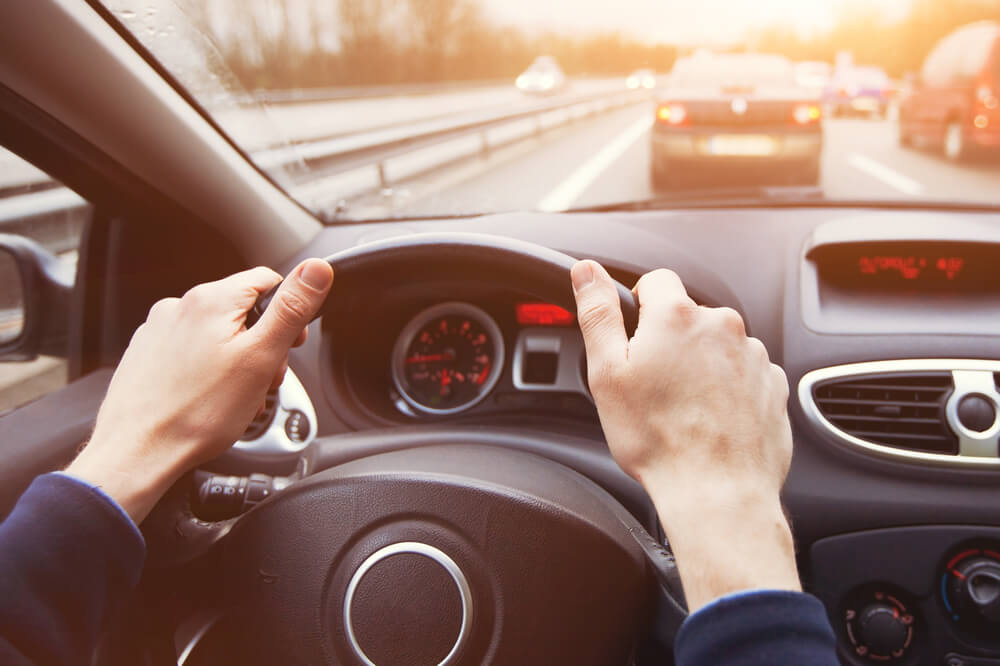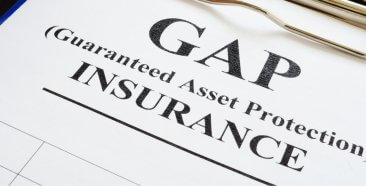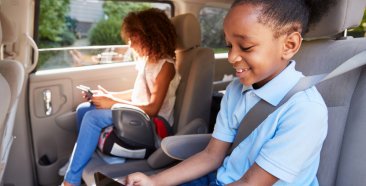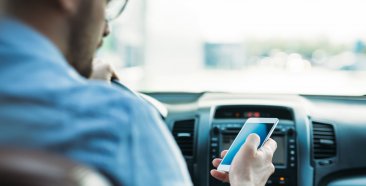
How Can I Stay Safe on the Road?
Following some basic driving safety tips could help you drive more safely and reduce your risk of an automobile accident. In reality, we know car accidents will happen. But you can help curb the frequency and severity of them by playing your part in making the roads safer. The very reason we call them automobile “accidents” is because most of them are preventable.
So what can you do to increase your level of safety on the road? Read through this list of important and simple road safety tips. They not only will help prevent you from getting into a collision, but they also could save your life and potentially some you money if you don’t have to file a car insurance claim after a wreck.
1. Get Plenty of Rest
You are the safest driver you can be when you are energized and alert. To ensure a safe drive, be sure that you had a good night’s rest and have eaten (but not too much) before hitting the road. Drowsiness and fatigue can affect your alertness and reaction time, which could easily lead to a collision.
If you start to feel tired or have trouble staying awake while on the road, pull over to a safe place or a designated rest area to park and take a quick nap. If it’s been a while since you have eaten, make a stop for a snack or a meal. Better yet, keep a stash of healthy snacks in your car to help keep your energy up. These little things can make a big difference in your driving ability.
2. Focus on the Drive
Distracted driving is one of the primary causes of auto accidents. According to a 2019 distracted driving campaign by the National Highway Safety Administration, over 3,000 people were killed in 2019 due to an accident caused by distracted driving. Having the music on too loud, talking on a cell phone, or texting and driving can distract you from the sights and sounds around you. A couple seconds of distraction is all it takes for you to get into a nasty wreck. And texting while driving is illegal in 48 states.
If you listen to music or podcasts as you drive, keep the volume low enough so you can hear all the traffic around you. This way you can hear car horns, sirens, and other auditory warnings around you as you drive.
It is best to not talk on the phone at all while driving since you need both hands on the wheel and your attention on the road. However, if you must use a cell phone while driving, there are hands-free options out there that allow you talk on the phone through your car’s speakers. While some people drive with a Bluetooth headset on, there are many laws that specify that only one ear can be covered or outright make it illegal to wear anything that covers both ears while behind the wheel, depending on state law. Regardless of legality, your safest option is to let any and all calls go to voicemail until you are parked.
Lastly, more and more people are getting into accidents because they are texting while driving. While this problem continues to grow every year, the solution is simple. Texting and driving accidents can be prevented by just waiting. If you get a text while you are on the road, ignore it until your drive has completed. If you think it is an emergency, drive over to the nearest parking area to park and address it.

3. Master Defensive Driving
Being a defensive driver can help you avoid mistakes while on the road. The basic idea of defensive driving is to anticipate dangerous situations and assume potential mistakes being made by other drivers. It’s preparing for anything and assuming the worst as you drive, making you take less unnecessary risks.
Some basic defensive driving tips include:
- Maintain the speed limit.
- Keep a 3-second buffer between you and other motorists.
- Always be buckled up with your safety belt.
These little actions can significantly decrease your risk of an accident, but there are other benefits, too. If you take a defensive driving course, it could possible qualify you for a car insurance discount on your auto insurance policy. You can learn more defensive driving tips and find nearby locations to take defensive driving lessons through your motor vehicle department.
4. Check the Weather Forecast
Road conditions can change dramatically if you are caught in a rainstorm or snowstorm mid-commute. It is important to know what to expect when you are driving, so check the weather forecast so you can properly prepare. No one wants to get surprised with a downpour of rain while driving then find out that their windshield wipers don’t work.
When it rains, you should drive a little bit slower and give yourself more space between vehicles to account for the slicker surface when you brake. Basic winter driving tips would include driving slowly to account for the ice on the road and making sure your heating system doesn’t fog up your windows, which could affect your visibility.
5. Take Frequent Breaks When On Road Trips
If you are driving long distances, make sure that you take a break every couple of hours. Park, get out of the car, stretch out your legs, drink some water, and have a snack. This will not only help prevent your legs from cramping up from being crouched in the car, but also boost your energy and your mood. Remember, being overworked and fatigued can make you less alert and more prone to car accidents.
6. Have an Emergency Car Kit
Even if you are an alert defensive driver, accidents and vehicle malfunctions can still happen. When they do happen, you’ll want to be properly prepared to prevent a bad situation from becoming worse. With that in mind, you should put together an emergency car kit to keep in your trunk or back seat.
An emergency car kit can help you address immediate needs or problems if you get into an accident or breakdown on the road. Not only should there be necessities, but you should also include some comforts in case there is a long wait before help can arrive.
7. Get a Roadside Assistance Service Membership
Driving without roadside assistance service can be a headache if your car breaks down in the middle of your trip. It is worth the time and piece of mind to purchase a membership in case your car doesn’t start or you need a tow. You can also talk to your insurance agent to see if they offer policies that include towing and labor. In the long term, your wallet will thank you.
8. Download Helpful Driving Apps
While you should never use your smartphone while you’re in traffic, it can still be a useful tool before you start your trip or when you are parked off the road. Applications such as Waze or Google Maps can help you avoid heavy traffic and accidents while navigating you to your destination. Apps like GasBuddy can help you find nearby gas stations. RepairPal can help you log your car’s repair history and give you recommendations of nearby repair shops that will address your problem if your car breaks down. There are even some apps such as iOnRoad (Android) that can help you estimate the distance between yourself and the other vehicles around you in traffic to alert you of potential hazards.
While these smartphone apps can come in handy, it is important not to completely rely on them and to maintain focus on the road without distraction. Even though these applications are mostly helpful to drivers, it cannot be stressed enough that you should not operate these apps on your phone as you are driving.
Find Affordable Car Insurance Online Today
While these safety tips lower your risk of being in a collision, accidents can still happen. It’s important to have a quality auto insurance plan in place just in case. Freeway Insurance offers a variety of auto insurance policies to fit your budget. Call (800) 777-5620 for a free quote, get a fast and easy car insurance quote online or visit us to get protected today.



